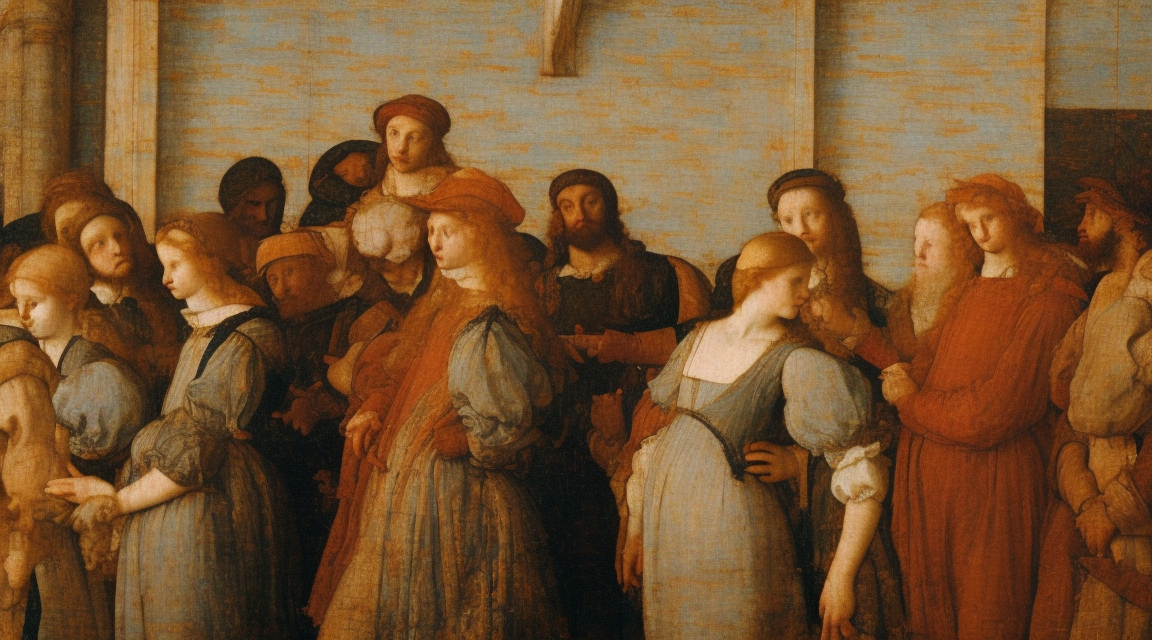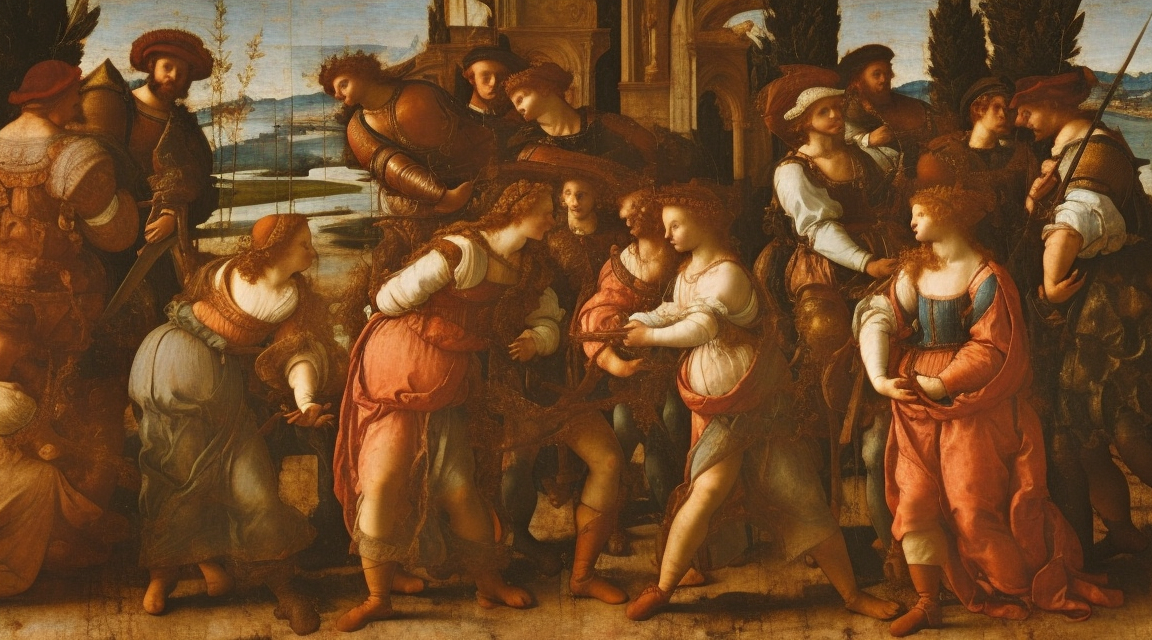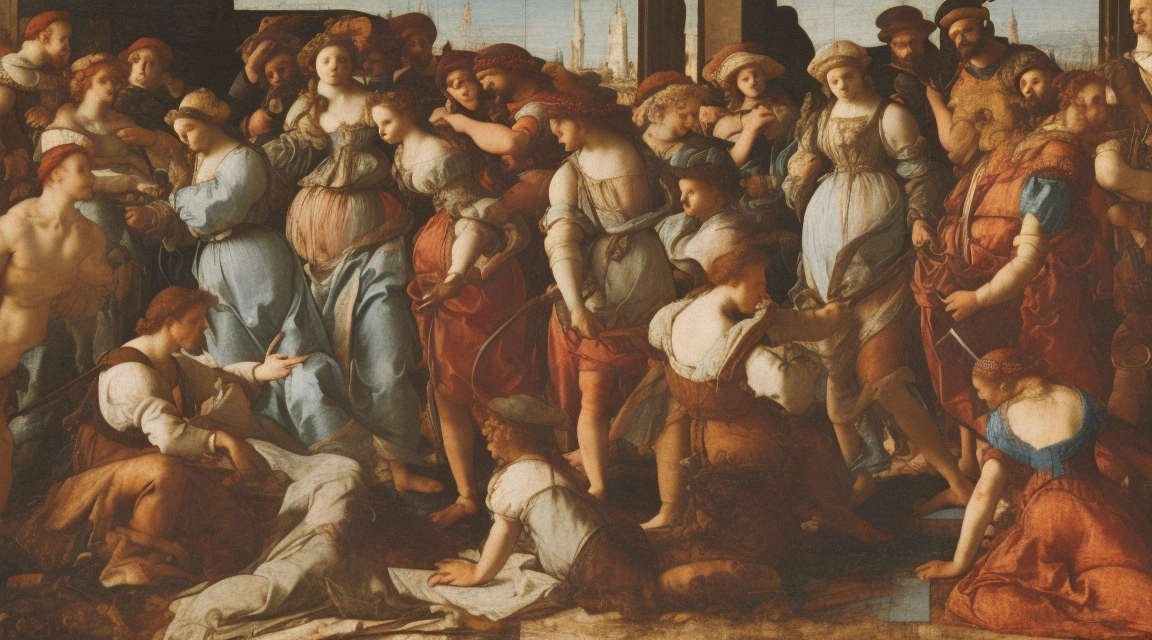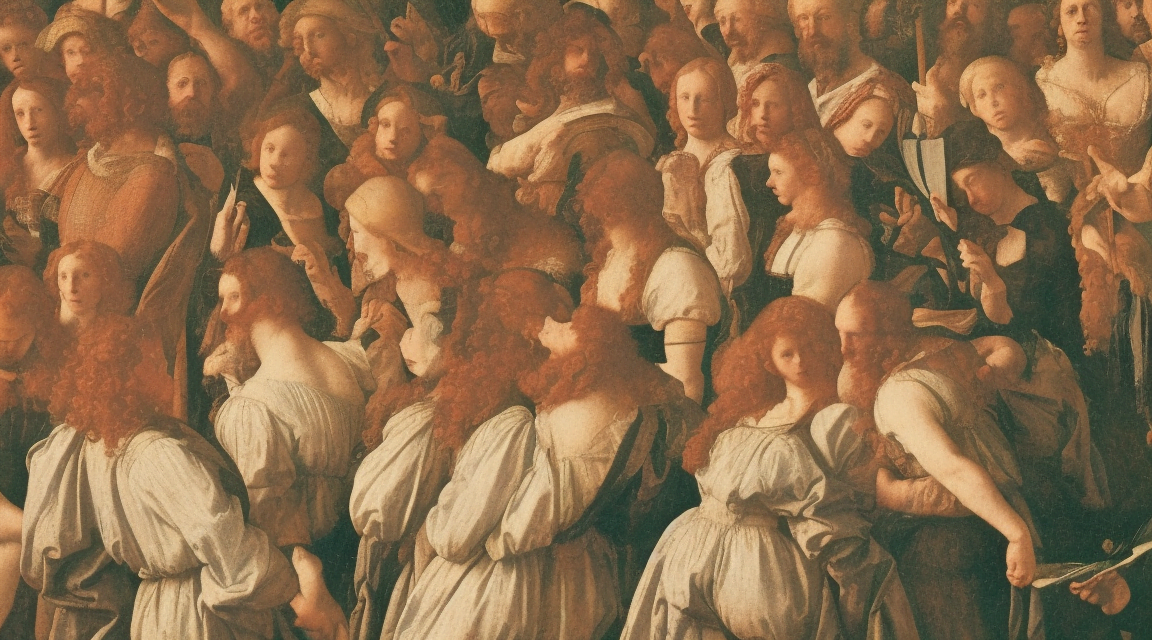The Renaissance, a pivotal period in history, witnessed a significant resurgence in the world of art. This cultural movement, spanning from the 14th to the 17th century, brought about a remarkable transformation in artistic expression and creativity. In this article, we will delve into the captivating world of Renaissance art, examining its key characteristics, influential artists, societal impact, and enduring legacy in modern art.
Introduction to the Renaissance

The Renaissance, which means “rebirth” in French, emerged as a reaction to the stagnant and rigid societal norms of the Middle Ages. It marked a period of intellectual and artistic flourishing that celebrated humanism, individualism, and the revival of classical Greek and Roman art. The Renaissance not only revolutionized art but also had a profound impact on various aspects of society, including science, literature, and politics.
Key Characteristics of Renaissance Art

Renaissance art is characterized by a departure from the medieval traditions and a renewed focus on realistic representation. Artists during this era aimed to capture the beauty of the human form, nature, and the world around them with meticulous attention to detail. Some key characteristics of Renaissance art include:
- Naturalism: Renaissance artists sought to depict the world as it appeared to the naked eye, employing techniques such as perspective, shading, and anatomically accurate proportions.
- Linear Perspective: The use of mathematical principles to create a sense of depth and three-dimensionality on a two-dimensional surface was a defining feature of Renaissance art.
- Classical Influence: Inspired by the art of ancient Greece and Rome, Renaissance artists incorporated classical themes, motifs, and styles into their work.
- Individualism: The Renaissance celebrated human individuality and the achievements of individuals. Portraiture became popular, capturing the likeness and personality of notable figures of the time.
- Light and Shadow: Mastery of chiaroscuro, the interplay of light and shadow, was a prominent feature of Renaissance art, adding depth and drama to the compositions.
Influential Artists of the Renaissance

The Renaissance produced a plethora of influential artists whose works continue to captivate viewers even today. Let’s delve into the lives and contributions of a few of these remarkable individuals:
- Leonardo da Vinci: Unveiling the beauty of Renaissance art, Leonardo da Vinci’s work represents the epitome of skill and innovation. Known for his masterpieces such as the “Mona Lisa” and “The Last Supper,” da Vinci’s art combines technical precision, scientific curiosity, and profound creativity.
- Michelangelo: Michelangelo, a prodigious sculptor, painter, and architect, left an indelible mark on the Renaissance art movement. His works, including the awe-inspiring frescoes on the Sistine Chapel ceiling and the renowned sculpture “David,” exemplify his mastery of human anatomy and his ability to convey profound emotions through art.
unveiling-the-beauty-of-renaissance-art-a-journey-through-leonardo-da-vincis-and-michelangelos-work
- Raphael: Raphael’s art showcases the idealized beauty and harmony of Renaissance aesthetics. His paintings, such as the “School of Athens” and “Madonna and Child,” exhibit a delicate balance of composition, color, and grace.
- Titian: Titian, a leading figure of the Venetian Renaissance, specialized in vibrant and richly colored paintings. His masterpieces, including “The Assumption of the Virgin” and “Bacchus and Ariadne,” demonstrate his exceptional skill in depicting texture and capturing the essence of his subjects.
- Jan van Eyck: As a Flemish painter, Jan van Eyck played a crucial role in pioneering the technique of oil painting, which had a profound impact on Renaissance art. His meticulous attention to detail and use of vibrant colors are evident in works such as “The Arnolfini Portrait” and the Ghent Altarpiece.
The Impact of the Renaissance on Society

The Renaissance was not merely a revival of artistic expression but also a transformative force that extended into various aspects of society. The rediscovery of classical texts and ideas fueled intellectual inquiry, leading to advancements in science, mathematics, and philosophy. It emphasized the value of individualism, human potential, and the pursuit of knowledge.
Moreover, the patronage of wealthy families and the Catholic Church provided financial support to artists, allowing them to focus on their craft and produce groundbreaking works of art. This patronage system not only elevated the status of artists but also contributed to the flourishing of artistic innovation and experimentation.
Art held a central role in religious and secular life during the Renaissance. Religious institutions commissioned grandiose frescoes, sculptures, and paintings to inspire devotion and convey theological teachings. In the secular sphere, art became a symbol of power and wealth, as rulers and nobles adorned their palaces and courts with exquisite artworks.
Legacy of the Renaissance in Modern Art

The influence of the Renaissance on modern art cannot be overstated. The artistic innovations and ideals of this era reverberate through subsequent art movements, shaping the course of art history. Here are a few examples of how the Renaissance continues to inspire modern artists:
- The Impact of Pop Art on Modern Culture: The bold and vibrant colors, along with the incorporation of popular culture imagery, in movements like Pop Art can be traced back to the fascination with color and the celebration of everyday life in Renaissance art. the-impact-of-pop-art-on-modern-culture
- The Evolution of Cubism: How Picasso Redefined Art with Geometric Shapes: Picasso, a pioneering figure of the Cubist movement, drew inspiration from Renaissance artists’ exploration of perspective and multiple viewpoints. the-evolution-of-cubism-how-picasso-redefined-art-with-geometric-shapes
- The Influence of Impressionism: Exploring the Art Movement: Impressionist artists, with their emphasis on capturing fleeting moments and the play of light, owe a debt to the Renaissance artists’ mastery of chiaroscuro and their attention to capturing the effects of light and shadow. in-the-influence-of-impressionism-exploring-the-art-movement
- Surrealism Art: Exploring its Dream Realm and Cultural Impact: The concept of the subconscious mind, explored in Surrealism, draws parallels with the exploration of the human psyche in Renaissance art. surrealism-art-exploring-its-dream-realm-and-cultural-impact
- Unraveling the Bauhaus Art Movement: A Comprehensive Timeline: The Bauhaus movement, with its emphasis on the integration of art and design, can be traced back to the Renaissance ideal of art harmoniously intersecting with other disciplines. unraveling-the-bauhaus-art-movement-a-comprehensive-timeline
In conclusion, the Renaissance stands as a transformative era that unlocked new artistic possibilities and forever altered the course of art history. Its key characteristics, influential artists, societal impact, and enduring legacy in modern art continue to inspire and captivate audiences to this day. By exploring the Renaissance and its art movements, we unravel a rich tapestry of human creativity and cultural evolution.
